Bad Lobenstein (DE)
The Synthetic Site Folder and Site Brief are available for free.
Please register and login to access the Complete Site Folder.
- Synthetic site folder EN
- Site Brief DE | EN
- Site on Google Maps
- Back to map
Data
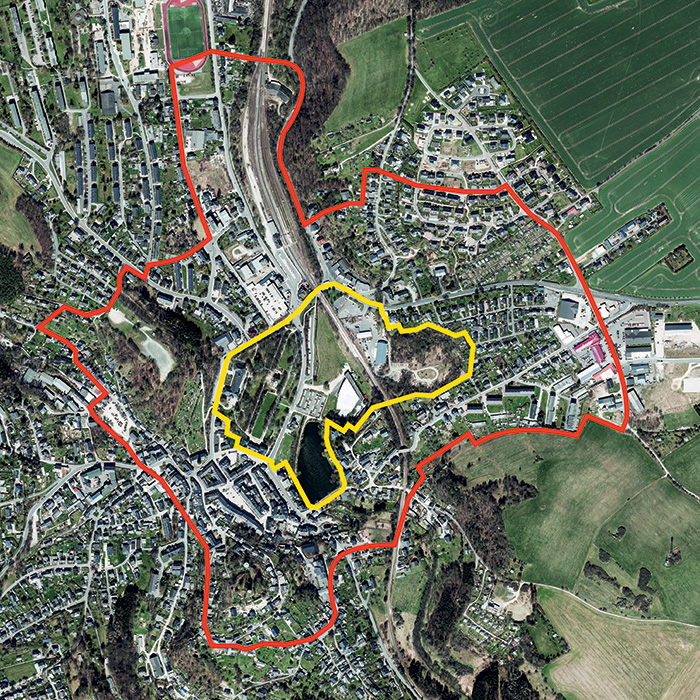
BAD LOBENSTEIN (DE)
Scales L/L
Team representative Architect/landscape designer
Location Bad Lobenstein, Germany
Population 5500 inhabitants
Reflection site 73 ha - Project site 12 ha
Site proposed by City of Bad Lobenstein
Actors involved City of Bad Lobenstein, Municipal Spa Company
Owner(s) of the site City of Bad Lobenstein, Saint-Gobain Building Distribution Deutschland GmbH, Private Property Owners, LRA Saale-Orla-Kreis
Commission after competition In the on-site workshops after the competition, the results are to be discussed on site and adapted if necessary. The next planned step is to commission the winning team(s) with urban planning studies.
More Information
Inhabited milieu's challenges
The town of Bad Lobenstein is looking for strong courageous ideas and spatial concepts for places of experience as well as accommodation and health architecture in order to define its character as a spa town of the 21st century and to become one of the central destinations in European health tourism in the future.
The traditional spa town of Bad Lobenstein - about three hours each by car from Munich and Berlin - is located in the midst of a unique landscape with steep slopes and forests in the Thuringian Slate Mountains. The project area in a valley location includes the historic spa park, the existing ARDESIA thermal baths with parking spaces, the town pond as well as the Lemnitz River floodplain and fallow land.
With a total length of over 70 km, the Saale Cascade in Thuringia, which borders the town, is the largest contiguous water reservoir in Europe. The Thuringian Sea meanders through the Saale valley in countless meanders, lined with numerous recreational and holiday resorts.
The spa town wants to be a pioneer for the integrated development of urban and health planning. The Europan competition task is to identify a new clinic location, to expand the thermal spa landscape and to diversify the accommodation offers. Innovative and pioneering design approaches must be developed for resource cycles, a connecting open space concept between nature and urban space and supplementary offers in the area of wellness, well-being and nature tourism.
In a trend-setting manner for spas and health resorts in the rural areas of Europe, urban and landscape deve- lopment lines for integrated health, tourism and urban planning are to be developed for this location.
Questions to competitors
How can Bad Lobenstein as a tourism destination use and combine architecture and nature to offer experiential spaces and thus gain more recognition? How can the needs of the population, travellers and nature be balanced in the spaces that are both living environments and destinations? Which key spatial reference points must be further developed? Bad Lobenstein sees an outstanding development path in the continuation of a local tradition – the consistent use of bogs and mud as a healing agent.
What role do natural resource cycles in the surrounding landscape play in this process? How can tourism and landscape development be made sustainable and how can targeted climate adaptation measures be integrated? A conceptual and spatial examination of the resource cycles around the themes of mud and thermal water is required.
The location and compatibility of the facilities should be examined in the project site and the study site; i.e., in addition to the city-owned areas of the spa facilities, other private areas can also potentially be integrated into the design in justified cases. Central questions for the processing of the site are: What strategies and programmes are needed for a multifunctional health location with decentralised offerings and a central spa loca- tion? How can existing offerings (e.g., mud treatments) be combined with therapeutic approaches in outdoor spaces (e.g., forest bathing, Kneipp pools, water playgrounds, outdoor sports parkour)? Where and how can the resources of mud, water and slate be experienced and deployed?
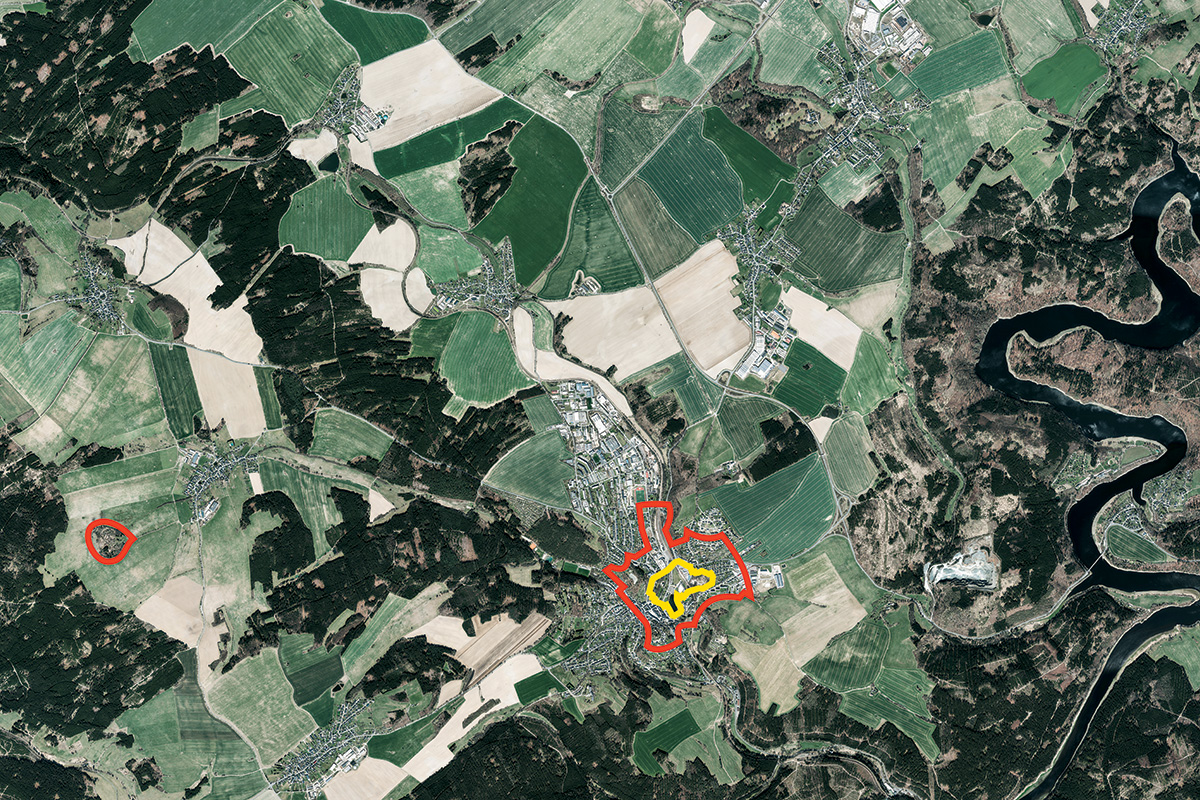
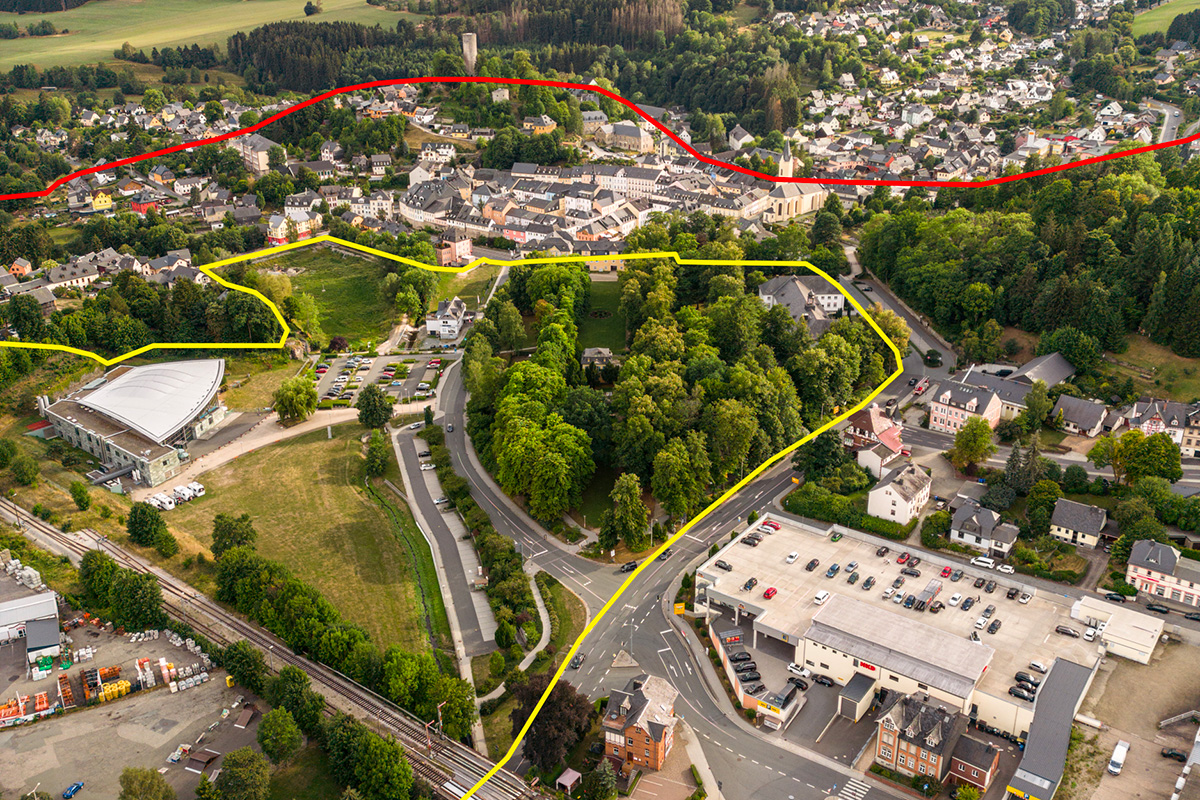
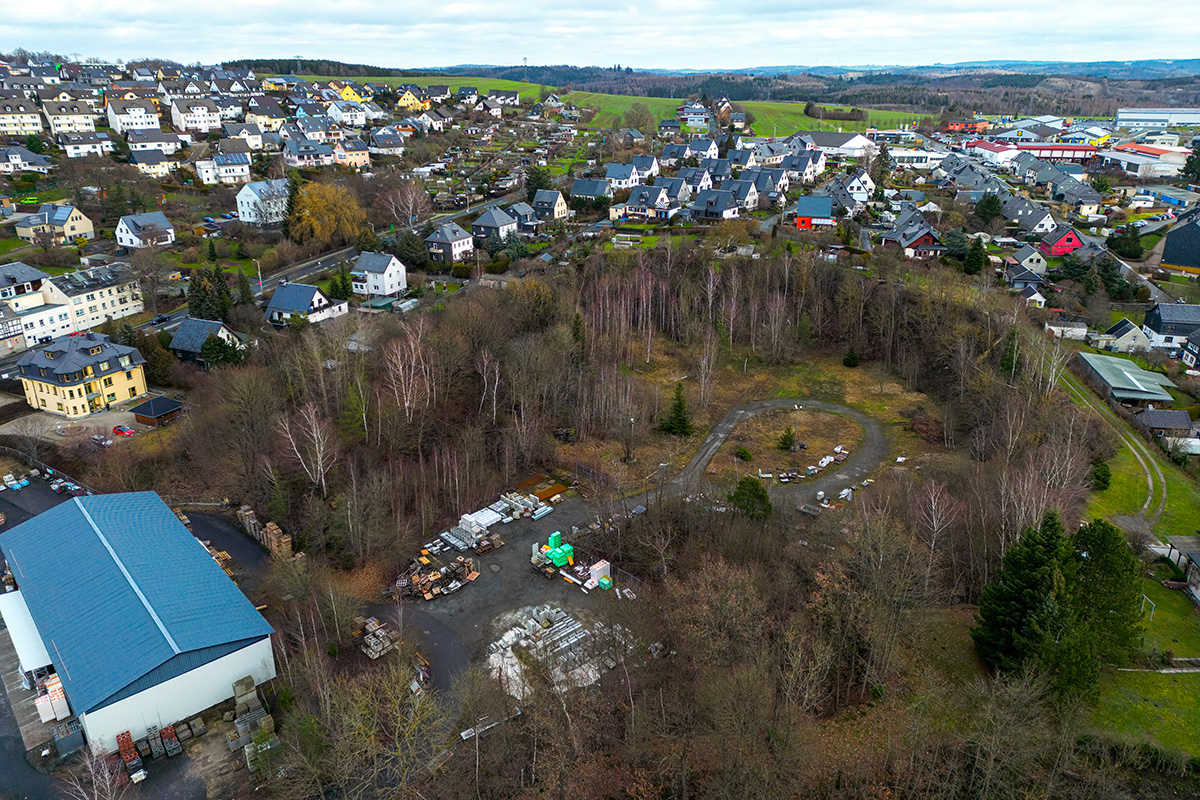
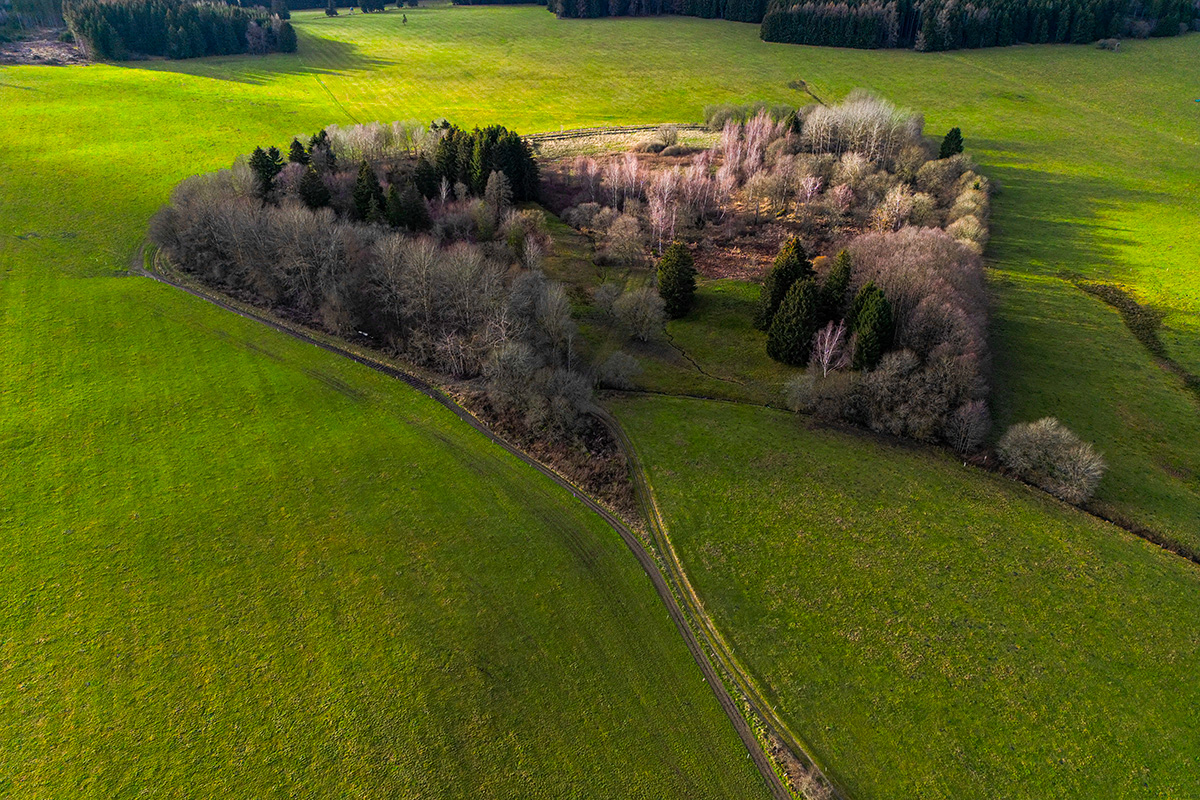
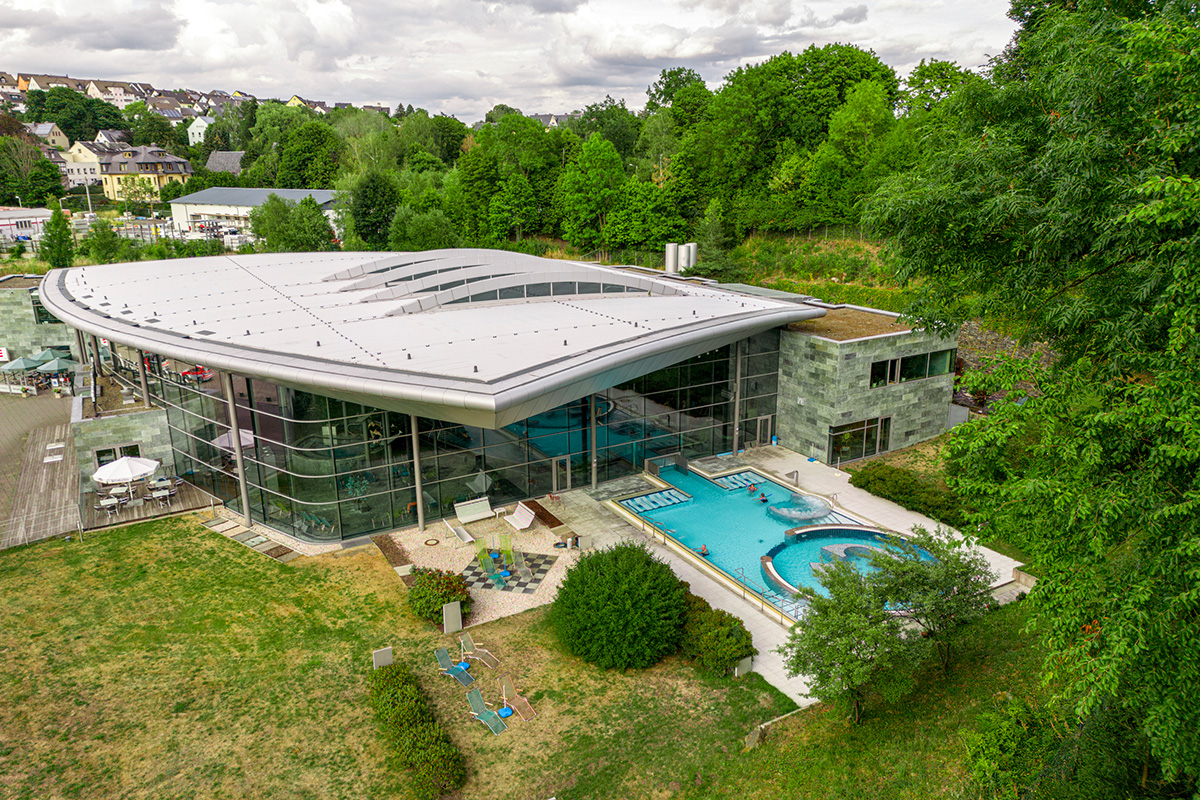
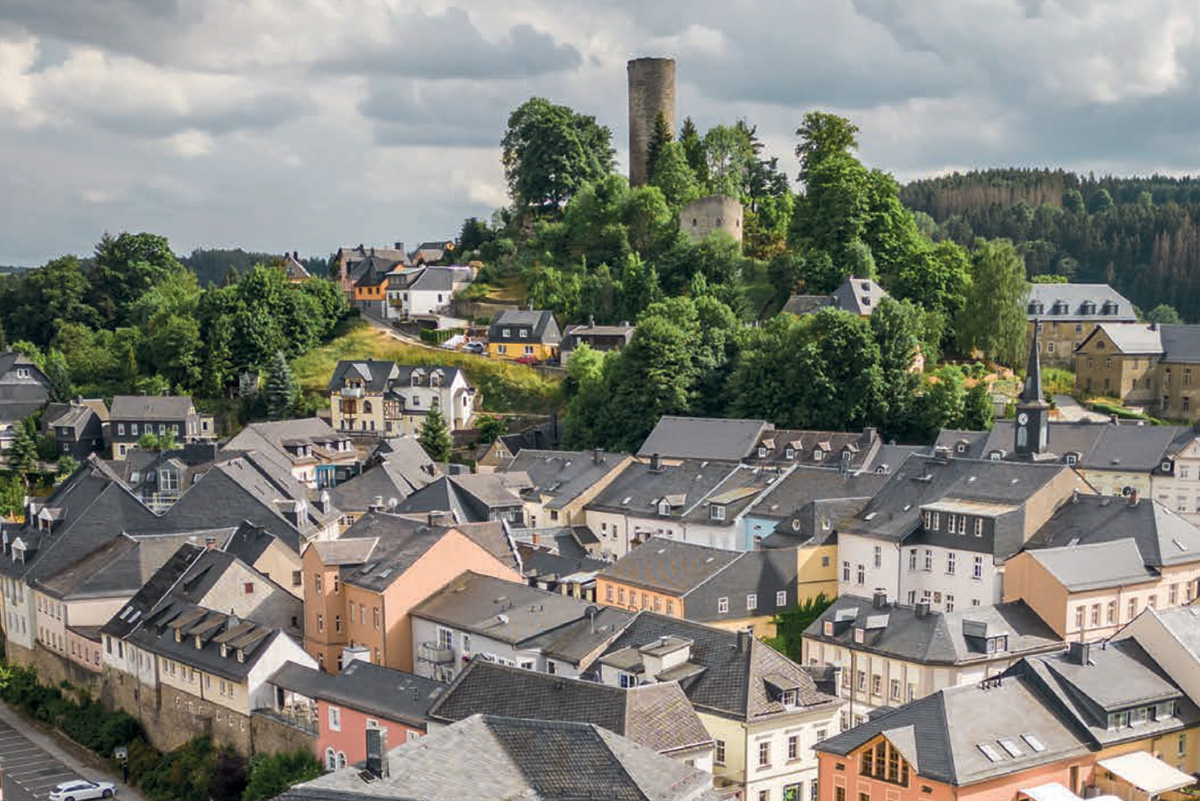
Questions on the site
The documents DE_Bad_Lobenstein-C-M1.1.dxf and DE_Bad_Lobenstein-C-M1.2.dxf are not working when opening them with cad programmes. References are missing and no drawing appears. Could you please verify this and upload the correct files?
The files DE_Bad_Lobenstein-C-M1.1.dxf and DE_Bad_Lobenstein-C-M1.2.dxf are altitude profiles of the surroundings of Bad Lobenstein and are only to be considered as an additional feature. The significant data on the city structure are the file DE_Bad_Lobenstein-C-M1.3.dxf .
Would it be possible to have the topography in an editable format? DE_Bad_Lobenstein-PS-M1 is an image, same with other pdfs uploaded within the "maps" or "topography" folders. The only file that could be opened in autocad is DE_Bad_Lobenstein-C-M1.3 and only has buildings and roads represented (no topography or other elements like vegetation)
Unfortunately, it is not possible to provide topography in an editable format. There was a long coordination between the city and the state geodata office. It was only possible to provide the raster graphics provided.
This site is connected to the following theme
IMAGINE A SECOND LIFE! A Second Life! is a metamorphosis of a situation. The challenge is to regenerate and to support spaces in need of transformation from a new perspective towards the pre-existences and the hidden treasures that are already there. A new revalorization of all kind of resources – natural, heritage, energy, flows, economy, social… It means to reconsider uses and new proximities linking ecological and social dynamics. How to be attentive and welcoming to differences and vulnerabilities nourished by inhabited milieus facing climate change?
Transforming neighbourhoods and buildings towards an inclusive milieu
Specific documents
Questions on the site
You have to be connected –and therefore registered– to be able to ask a question.
Fr. 16 May 2025
Deadline for submitting questions
Fr. 30 May 2025
Deadline for answers
Before submitting a question, make sure it does not already appear in the FAQ.
Please ask questions on sites in the Sites section.
Please ask questions on rules in the Rules section.
If your question does not receive any answer in 10 days, check the FAQ to make sure the answer does not appear under another label or email the secretariat concerned by the question (national secretariat for the sites, European secretariat for the rules).